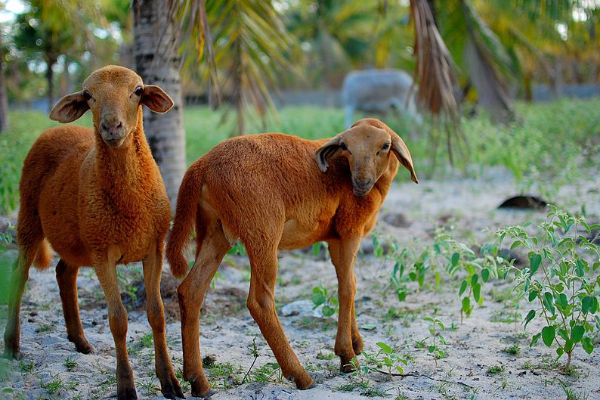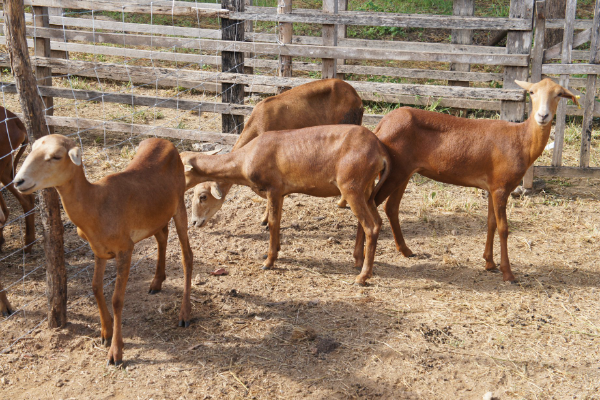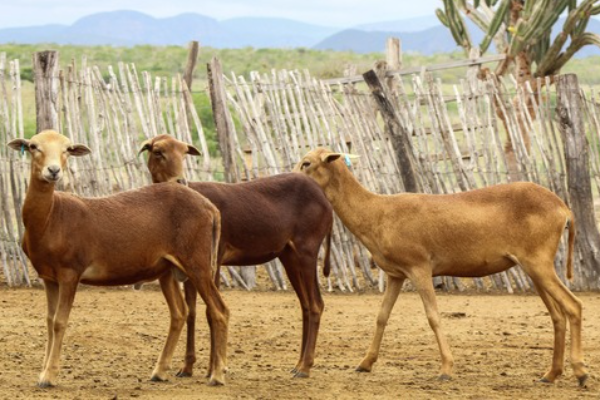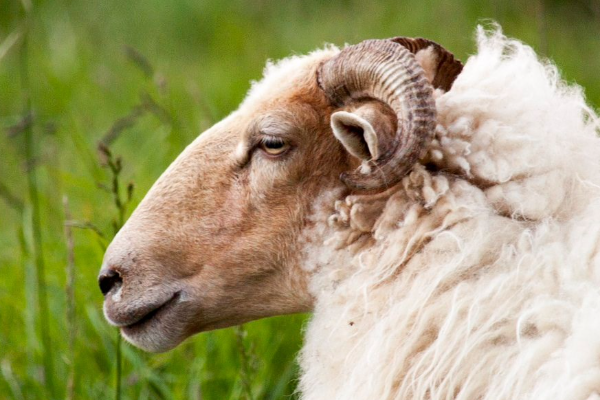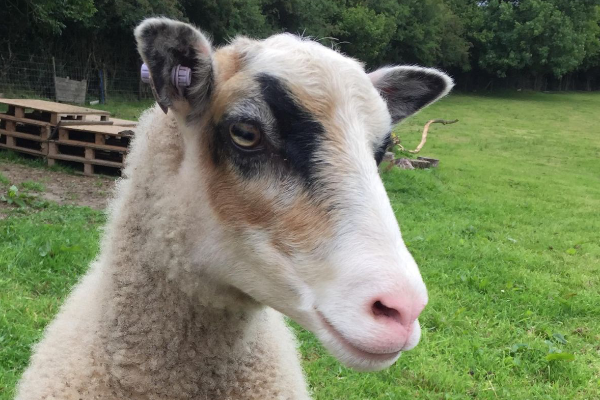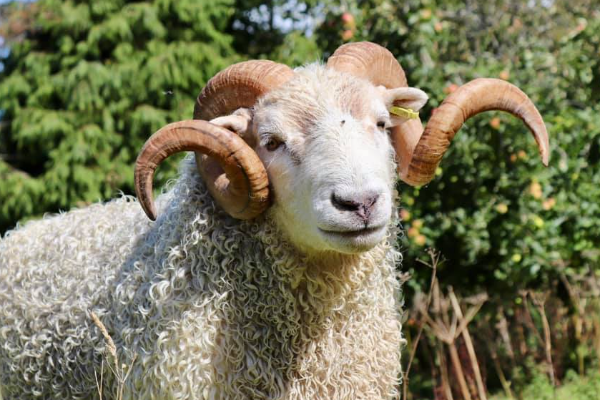Morada Nova Sheep
What is the history of Morada Nova Sheep?
Morada Nova is a Brazilian native breed of sheep. The name of the red variety was given by Professor Octavio Domingues during his visit to Northeast Brazil in June 1927, because it was first seen in the Morada Nova Municipality, Ceará State.Other names used are Deslanado do Nordeste (Northeast woolless), Deslanado vermelho (red woolless) and Deslanado branco (white woolless).
In October 1977, at a meeting organized by the Ministry of Agriculture in Fortaleza, Ceará, it was decided to use the name Morada Nova for both varieties, red and white.
Bahia's white Pele de Boi was included in the Santa Inês genus (white variety). This breed can be red, pied, black or white.
The Santa Inês breed originates from crossbreeding between the Morada Nova (red or white) and the Bergamasca breed of Italy. He inherits the Roman nose, drooping ears, and traces of wool from Bergamasca and his hair coat from Morada Nova.
According to Domingues (1954), red, white, and spotted fur sheep come from Bordaleiro of Portugal, who arrived in Brazil when these virgin fields were populated.
These Bordaleiro sheep are distinguished by their fur, which is a mixture of hair and wool. Over time, natural selection promoted the survival of individuals with short, goat-like hairs, taller, shaggy hair, and even varying degrees of wool.
However, Morada Nova is very similar to Venezuela's red African breed.
What are the characteristics of Morada Nova Sheep?
- Morada Nova Sheep has a deep rib cage, flat ribs, not very developed abdomen, muscular hips and thin rump.
- Head broad and long, lower convex profile, short muzzle, thin neck, short slightly sloping rump, long thin tail, thin vertical legs, small strong hooves.
- The hair is short, thin and coarse, with various shades of red, lighter in the perinaeum, scrotum, breast and head area; white tail tip; dark skin, short hair, dark mucous.
- There is also a variety with a white coat. The ratio of different colors has not been determined.
- Ears are shell-shaped, about 8 cm long, ending in a point.
- Females are polled, but males may show vestigial horns (marks).
- They are docile animals, they quickly adapt to handling practices, returning home in the evening.
- The heat tolerance index of the Morada Nova breed is about 95%. This was confirmed by the Ittner-Kelly test used by this author during the study conducted by the CNPC. When it comes to direct solar radiation, these animals have a red fur that tends to be purplish, which is minimized as the feather texture is soft and shiny. In addition to the advantage of the fur color, they take a stance that reduces the incidence of their rays when exposed to the sun: they always stand when there is little shade, they never lie down.
- Castration is rarely performed by breeders; men are fully marketed. When applied, it is done by manual cutting of the sperm ducts in weaning method or by mechanical clamping method.
- Baby lambs are raised with their mothers until they are weaned and kept the same as adults. Weaning naturally occurs at 3–4 months of age.
- Animals are neither slaughtered nor milked.
- Males are first put into service at the age of 12-14 months.
- Sheep lambs first at 14 to 16 months of age.
- Often the birth age is too early due to the inability to control reproduction.
What is the weight of mature Morada Nova Sheep?
A Morada Nova coach weighs between 40 kg and a mature Morada Nova sheep 30 kg.

Written by
H Cetin KATIRCI
Online ShepherdBreedsMore
IllnessesMore
Forage cropsMore
![]() Патологическая физиология голодания Arina TARAN
Патологическая физиология голодания Arina TARAN![]() Дефицит фосфора (гипофосфатемия) Hipofosfatemi Arina TARAN
Дефицит фосфора (гипофосфатемия) Hipofosfatemi Arina TARAN![]() Какие бывают кормораздатчики для ферм КРС? Irina Makarova
Какие бывают кормораздатчики для ферм КРС? Irina Makarova![]() Кормушки для овец Diana Myakisheva
Кормушки для овец Diana Myakisheva![]() Питание домашних коз: что едят, виды корма и правила кормления Alina Arslantürk
Питание домашних коз: что едят, виды корма и правила кормления Alina Arslantürk![]() Важность минералов питании сельскохозяйственных животных Irina Makarova
Важность минералов питании сельскохозяйственных животных Irina Makarova

